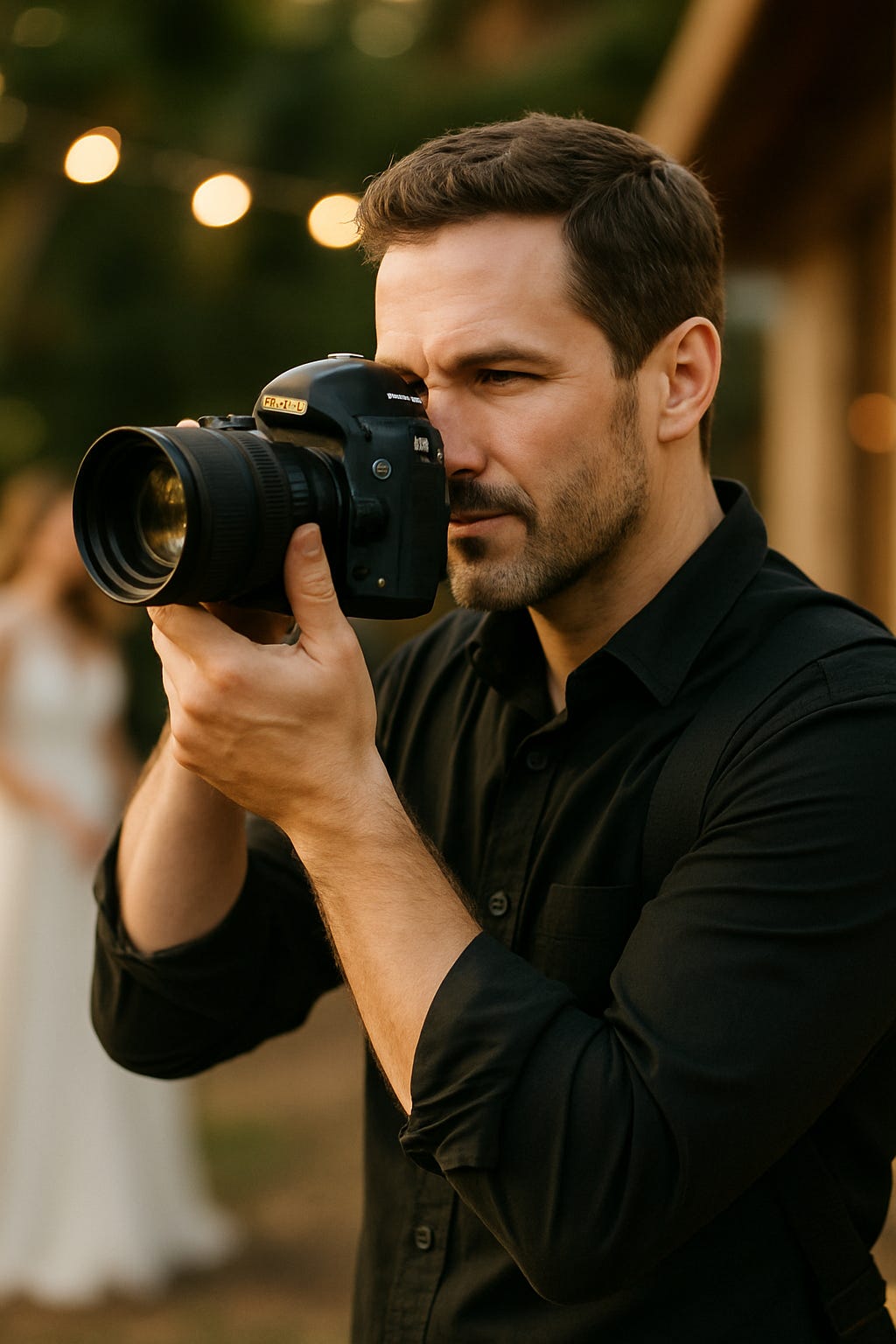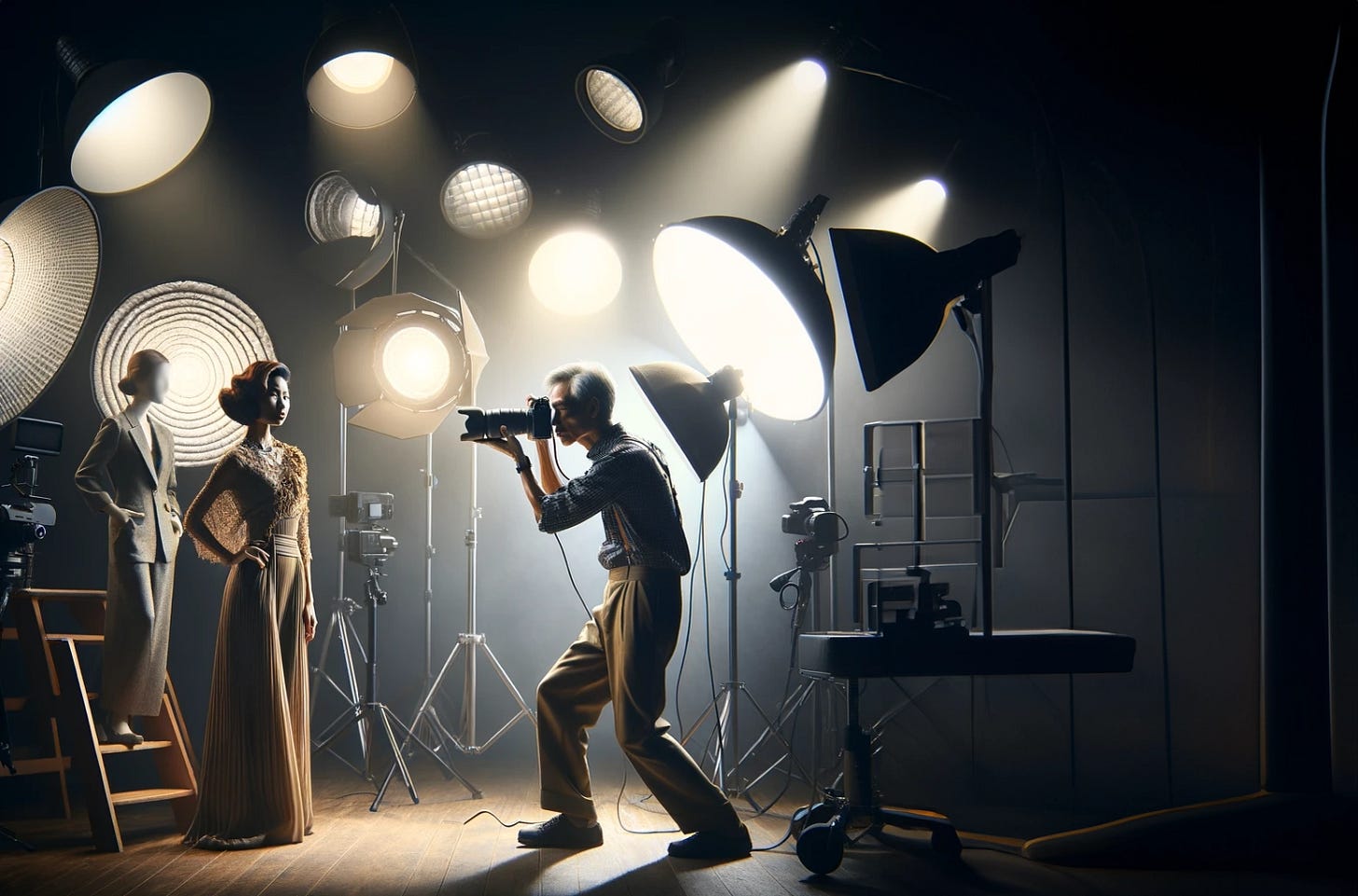Why Professional Photographers Aren't Obsessed with the Latest Camera Gear
and Why You Shouldn't Be Either
If you’ve ever browsed online photography forums, scrolled through YouTube reviews, or flipped through glossy photography magazines, you might think the only path to great images is paved with the latest, most expensive camera gear. It's easy to believe that incredible photography is directly tied to cutting-edge equipment boasting astronomical megapixel counts, blazing burst rates, or the latest AI autofocus technology.
But here’s the surprising truth: professional photographers—those making a living behind the lens—are often the least obsessed with gear. After years spent alongside top-tier photographers, I've discovered that their focus is rarely on the newest gadget. Instead, their approach emphasizes practicality, reliability, and financial sensibility. Let’s unpack this idea and explore why following their example could save you thousands of dollars, countless hours of unnecessary gear obsession, and even improve your photography.
The Myth of the Latest and Greatest
Camera manufacturers and retailers are excellent at selling dreams alongside their products. Every year, flashy marketing promises revolutionary features, unparalleled image quality, and performance improvements that will supposedly transform your photos overnight. However, talk to working professionals—photographers whose incomes depend on their daily output—and you’ll find a much different narrative.
In reality, seasoned pros tend to stick with gear that’s tried, true, and thoroughly dependable, often opting for equipment that's several years old rather than the latest model. They prioritize reliability and consistency, knowing that in the real world, missing a critical shot because of complicated or unproven technology is far riskier than the marginal benefits promised by new gear.
What Equipment Are Professionals Really Using?
Surprisingly, many elite photographers operate comfortably—and successfully—with camera setups that are five to ten years old. In fact, statistics show that top professionals often use gear that is far from cutting-edge. For instance, many wedding photographers continue to rely on cameras like the Canon 5D Mark IV or Nikon D750—both released nearly a decade ago—simply because they get the job done exceptionally well without any fuss.
Why do these pros stick with older equipment? Primarily because these cameras are battle-tested. They offer the durability, consistent image quality, and straightforward operation photographers trust during high-pressure jobs. The slight enhancements found in newer models, while enticing, often don't justify the substantial price jump and learning curve.
Profit Over Pixels: Real Photography Economics
Here’s an essential principle often overlooked by hobbyists and enthusiasts: “Income minus expenses equals profit.” Professional photographers live and breathe this simple financial truth. While hobbyists might justify a new $5,000 camera body or a $2,500 lens for incremental gains, professionals look at such investments through a strictly economic lens.
Consider this: according to recent industry surveys, the average professional photographer’s annual income ranges between $35,000 and $75,000, depending on specialization and experience. When your income falls within these modest brackets, every expense needs careful scrutiny. Professionals know that an expensive camera purchase might increase their image resolution slightly—but will it boost their profits or significantly elevate their client satisfaction? Often, the answer is no.
Instead of throwing money into incremental improvements, professionals prefer to invest in areas that directly enhance their business, like lighting equipment, high-quality lenses (often timeless in their design and performance), reliable storage solutions, education, and marketing.
Where Professionals Actually Spend Money
So, if photographers aren’t dropping thousands every year on the latest camera bodies, where is their money going? Typically, they invest in three critical areas:
1. Education and Skill Development
Professionals understand that skill trumps gear every time. Workshops, tutorials, mentorships, and industry events often provide far greater returns than new cameras or lenses. Learning how to master lighting, composition, and editing techniques dramatically improves photographic output far beyond what any camera upgrade can deliver
.
2. Marketing and Client Acquisition
Successful professional photography hinges more on business acumen than gear upgrades. Photographers regularly allocate resources toward client outreach, building robust online portfolios, SEO optimization, and targeted advertising campaigns. These investments yield measurable returns, attracting new clients and repeat business—something no camera gear can directly accomplish.
3. Reliable, Quality Equipment (Not Necessarily Newest)
When pros do purchase gear, it's frequently robust, well-regarded equipment that enhances reliability and performance consistency. Investments in top-tier lenses, stable tripods, durable bags, and powerful lighting equipment offer proven value. Many professionals also opt for used equipment in excellent condition, leveraging cost savings without sacrificing reliability.
The Trap of Gear Obsession
For enthusiasts and aspiring photographers, obsessing over gear can become a costly and frustrating trap. This obsession often leads to:
Diminishing returns: Each new camera iteration offers smaller and smaller benefits. For most applications—especially commercial, wedding, or portrait photography—these incremental improvements often aren't noticeable to clients.
Distraction from essential skills: Spending countless hours researching gear diverts attention from actually improving photography skills. Time spent practicing lighting setups, composition, and editing could significantly boost image quality more than any equipment upgrade.
Financial strain: Continuous gear upgrades can quickly drain resources, leaving little left to invest in business growth or education.
Case Studies from Real Pros
Consider real-world examples: I know seasoned photographers who produce award-winning images using cameras released in the early 2010s. They achieve commercial success, client satisfaction, and artistic recognition without constantly upgrading their equipment.
One respected portrait photographer in Northern California uses a decade-old medium-format camera paired with vintage lenses from the 1970s. His images are in high demand precisely because of the unique quality and character provided by older equipment—something the newest models can’t replicate.
Similarly, many successful wedding photographers frequently rely on reliable older DSLR models. Their consistency in color rendition, ease of use, and durability in demanding conditions far outweigh the minimal benefits of newer, pricier options.
The True Secret to Exceptional Photography
So, what’s the true secret that allows professional photographers to consistently deliver exceptional work? It boils down to a simple combination:
Skill Mastery: Knowing how to see and capture beautiful images.
Reliability: Gear that consistently performs under pressure.
Financial Savvy: Spending wisely to ensure profitability and business growth.
These factors are infinitely more valuable than obsessing over the latest megapixel counts, autofocus algorithms, or burst rates.
How to Break Free from Gear Obsession
If you’re caught in the cycle of gear obsession, here are practical steps to refocus:
Limit gear-related browsing: Spend more time shooting, editing, and refining your technique instead.
Set clear investment goals: Only upgrade equipment when your current gear genuinely hinders your ability to perform specific jobs or achieve desired results.
Invest in education and business: Channel funds into classes, mentorships, or marketing strategies that directly benefit your growth.
Great photography isn’t about constantly chasing the latest technology. It’s about capturing compelling images, connecting with clients, and managing a profitable, sustainable photography business. By shifting your focus away from gear obsession and toward practical, proven investments, you’ll find your photography—and your financial well-being—dramatically improving.
Take it from the pros: success in photography isn’t measured in megapixels or AI-powered autofocus systems—it’s measured in skill, reliability, and profitable choices.





